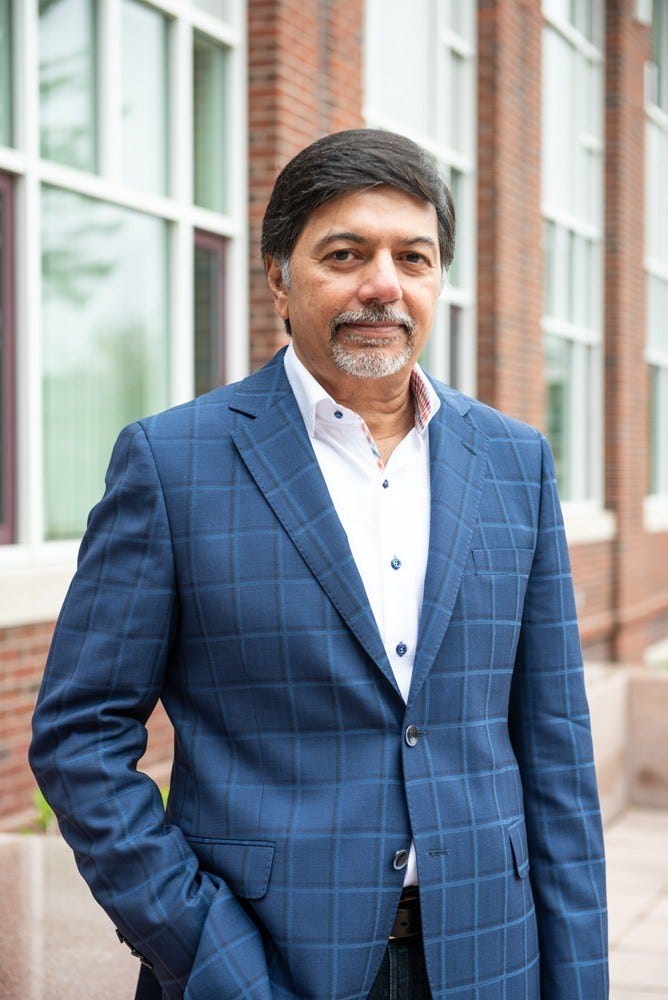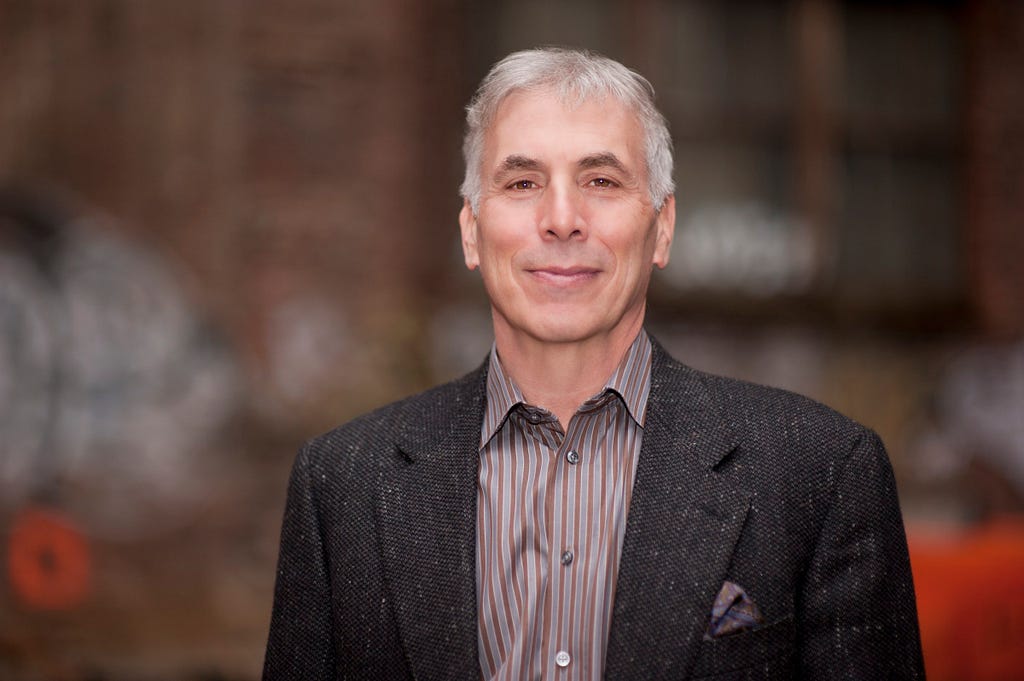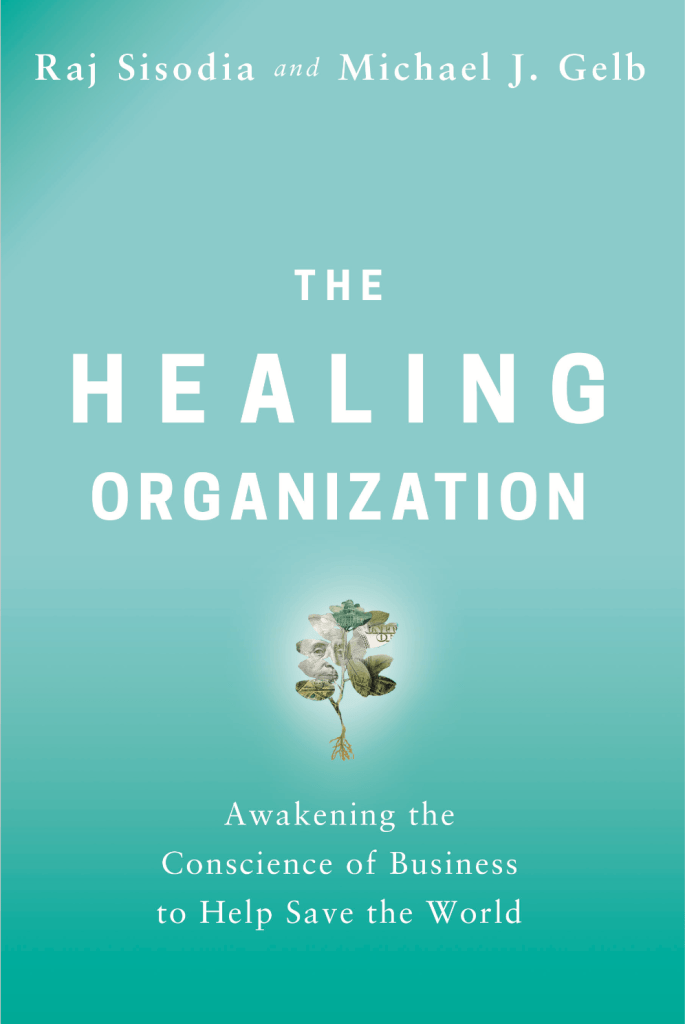Authors Share How Businesses Can Alleviate Suffering and Elevate Joy—Starting with Their Workers
By Vanessa Childers

If you ask Raj Sisodia, co-founder of Conscious Capitalism, and Michael J. Gelb, founder and president of the High Performance Learning Center, business shouldn’t just be about “doing no harm” — it should fundamentally be a place of healing for employees and leaders; a source of healing for employees’ families, customers, communities, and the environment; and a force for healing in society, healing economic, social, political, and cultural divides.

In their new book, The Healing Organization: Awakening the Conscience of Business to Help Save the World, inspired by the epidemic of suffering connected to unconscious capitalism, Sisodia and Gelb dive into business’s role in the causes of and solutions to the world’s problems, share awe-inspiring case studies of organizations that heal, and offer principles and practices to transform your own company. We sat down with the duo to learn more about the concept of healing through business, and how it’s done.
In this conscious business universe, we use the words “impact” and “change” a lot, but we don’t hear the word “healing” as often. Can you tell me a little about what you mean by the word “healing” — and if there is a difference between a conscious company and a healing organization?
Michael Gelb: A healing organization and a conscious business are the same to a certain extent. Healing means wholeness. Wholeness means you don’t see your enterprise as separate from the lives of the people who are working in it. You don’t see it as separate from customers. It’s the stakeholder model, but everyone is a stakeholder; the planet is a stakeholder. You want to be a conscious organization and have the four pillars of conscious capitalism — all of that applies, but the healing organization takes it all to another level in the clarity of intention and the deep purpose of why one begins or transforms an enterprise. It’s an awakening. Business itself obviously has no conscience; only individual humans have conscience.
Raj Sisodia: This is a super-conscious approach to capitalism. We are specifically saying that a business’s purpose should link to the concept of healing, to alleviate unnecessary suffering, to prevent it — and to elevate joy for all stakeholders. There is some suffering in the world that cannot be avoided. People have enough suffering that is outside of our control as leaders — things that happen with their parents, children, health, or financial suffering. We need to help them deal with and alleviate the kind of suffering that is a part of life, and there are many ways to do that. It all comes back to the fact that happier, more engaged people are going to do more wonderful things for the business.
Conscious Company Media is part of the community of businesses that have used a third-party verification of their impact. Use the free B Impact Assessment to evaluate your company’s impact on all stakeholders, including the environment, your workers, your community and your customers.
What would you say is the human need that, when done right, a healing organization is meeting for its stakeholders?
Sisodia: The human need to care and to feel cared for. We start as babies and need to be cared for. We develop strength and then want to care for others. It’s about us depending on each other to achieve our purpose. It’s an abundance mindset here, rather than scarcity. Our economy has been built from scarcity. The fact is, we are the most powerful species on this planet; there’s no limit to what we can create. But those energies can only be released in an environment where we’re being cared for and can do that for others. Otherwise, it’s survival mode.
Is it possible for an organization to have a healing purpose without focusing on its workplace culture?
Sisodia: Yes, many institutions in the health care industry are a good example. These are workplaces that are healing the outside world but are a place of suffering inside. Most employees and leaders get completely burned out, used, and abused — and after spending hundreds of thousands of dollars to go to school. There is an obsession with the customer! If you had to pick a stakeholder to prioritize, it has to be employees. They and their children — and multiple generations to come — are impacted.
Gelb: What you really manage within the business is the energy. When you have a healing purpose, when what you’re doing is not just for your own self-aggrandizement but it’s for your colleagues, your family, your community, for the world — this is the heroic spirit. This brings out something in people. There’s no other way to get that level of energy, commitment, and engagement. You can give people a lot of money and they still don’t operate with that kind of energy. But don’t say you’re going to do it and not deliver. If you start saying, “We want to heal,” then you’d better follow up; you’d better be impeccable in how you lead, because it’s a sacred trust that you are asking for. You’re holding yourself to a very high standard — although we’re hoping it’ll become a new standard.

Can you use an example from the book to talk about how you can deliver on that promise and earn that sacred trust?
Gelb: DTE Energy. It’s a utility company — nobody likes utility companies. They’re virtual monopolies. You get your bill, you have to pay it, there’s not much recourse, there’s no other service provider you can go to. They’re rarely renowned for customer or employee satisfaction. Gerry Anderson took over this Detroit-based company and asked a simple question, “Are we a good company?” There was a really clear answer by every metric: no.
He set out to figure out what he could do about this. He came upon the notion of continuous improvement. The first principle of continuous improvement is prioritizing the well-being of your people. And then the financial crisis hit and Detroit was spiraling downward. His accounting team said, “We’re about to become a junk utility; we need to lay off a huge number of people. We’re going to be short a couple-hundred million dollars.”
He chose to go with his conscience, and I’m sure it wasn’t easy. He went in front of the whole company — 10,000 people — and said, basically, “We need to let go of a lot of people, and I’m not going to do it. For us to not do it, here’s what I need from you.” He asked people to work with more creativity and passion than they ever had before. And they turned this company around within a year. They were not only fully solvent but they also were doing really well.
Anderson was meeting with people who directly serve customers, who go to the field and do repairs. One woman said, “I never really got to thank you for saving us. We were in stark circumstances. My husband lost his job, and if I had lost my job we probably would’ve been homeless. Your following through saved my family. We’re doing really well now, but a lot of Detroit is suffering. Now that our company is back on its feet, what can we do to serve our community?”
As people experience this healing energy, it cascades. DTE embarked on all these efforts in Detroit to try to heal the community, efforts that continue to this day. Meanwhile, their financial performance is fabulous, and it’s the best place to work. It’s an amazing transformation because Anderson, at the moment of truth, followed through. He took a huge risk and said, “We’re not going to manage by the numbers; we’re going to manage by our principles and our commitment to healing.”
What is one action item or practice a leader can implement today to start transforming their company into a healing organization?
Gelb: People don’t like to do this, but search your conscience, search your soul; look really objectively and compassionately. I’ll use the example of Appletree Answers. When one of the leaders found out that one of his people was homeless, that most of the people who answer phones for his company have back problems because of the lousy chairs and no one ever asked them how the company could help them, he experienced a sense of profound shame because he hadn’t thought about these people — and then he was telling them, “Be nice to our customers when they call us!”
They started asking their employees every day, “Is there anything we can do to make your experience of working here more enjoyable?” And the first thing they said was, “Get rid of these terrible chairs!” This industry’s turnover rate was 150% per year; that means that everyone leaves and then half of them leave again. His company was slightly better than average at 120% turnover every year. But after they [started listening to their employees], the turnover went down to 18%.
Sisodia: Unless the leader embarks on the journey from within — and is open to the self-evaluation necessary — this type of change can’t happen. Working on yourself is something you have to do if you want to become a healing organization.
This article was originally published by Conscious Company Media. B the Change gathers and shares the voices from within the movement of people using business as a force for good and the community of Certified B Corporations. The opinions expressed do not necessarily reflect those of the nonprofit B Lab.

How to Transform Your Business into a Place of Healing was originally published in B the Change on Medium, where people are continuing the conversation by highlighting and responding to this story.